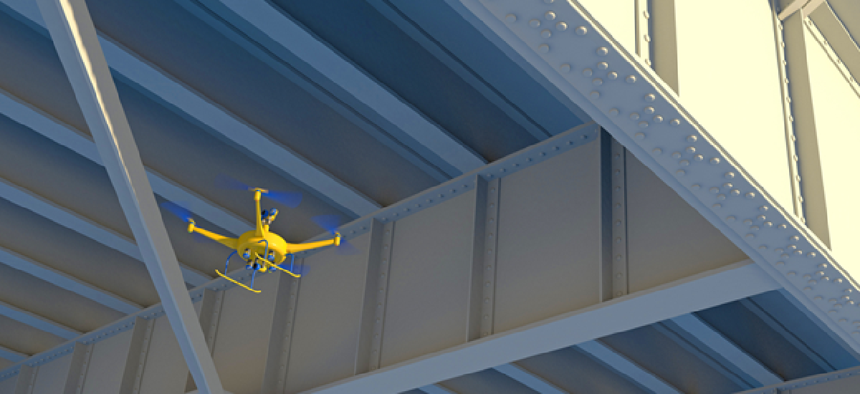Drones make inroads with transportation departments

As early adopters of unmanned systems, state transportation departments hope to shape the conversation around the evolving technology.
The use of drones by state transportation departments is still being studied closely, but a growing number of agencies have begun using the airborne platforms to improve operations, according to a survey by the American Association of State Highway and Transportation Officials.
Of the 44 state DOTs responding, 35 said they had deployed drones, and 20 of those are flying them on a daily basis. Fifteen states said they’re researching whether to deploy drones on a daily basis and for what purposes.
AASHTO first conducted the survey in 2016, after "hearing anecdotally about how states had been getting into drones and utilizing this technology," AASHTO’s Media Relations Manager Tony Dorsey said. "Back in 2016," he said, "there were about 17 states that were dabbling in it.”
State transportation departments are adopting drone technology largely for infrastructure inspection, but the technology can also be used to get an aerial view of traffic or analyze car accidents.
“State DOTs are realizing they need to be early adopters of this technology,” Dorsey said. “They need to be at the table leading, not following," to ensure they get the kinds of data that's most helpful to them.
North Carolina DOT's Unmanned Aerial Systems Program Manager Basil Yap agreed.
“We're talking about making an economic development decision here -- because commercial drone package delivery is coming and state DOTs across the country need to play a role in developing the highways of the sky -- especially in urban areas,” he said.
The Michigan DOT is currently in the second phase of a pilot program looking at how different drone-mounted sensing technologies – high-resolution photogrammetry, infrared and LiDAR – compare to more traditional techniques, according to Steven Cook, MDOT's engineer of operations and maintenance. The next phase will test integrating the data collected from the drones into the agency's daily operations, he told GCN.
Using unmanned aerial systems for transportation department infrastructure inspections requires states to compete for the limited number of trained drone operators. To fill this skills gap, colleges and universities have launched drone programs, where DOTs can staff for training, Dorsey said.
The federal government has shown significant support for expanding commercial UAS operations, as evidenced by the UAS Integration Pilot Program announced in November 2017 that will give participants latitude to experiment with operational and communications concepts to advance the integration of drones into the existing aviation environment.
Hundreds of applicants applied for the program, and the Federal Aviation Administration is expected to announce the winners in May.
NEXT STORY: The quantum promise





